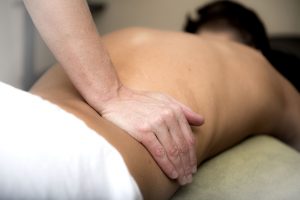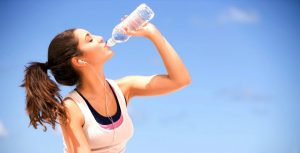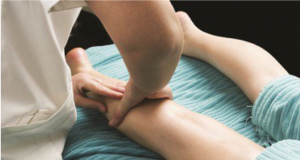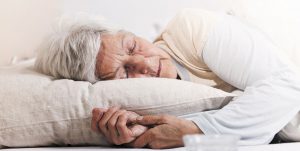How Accurate Is That Test?
Physical assessment is considered one of the most accurate ways to assess function of the locomotor tissues of the body. While we can often gain valuable information about structural problems through high-tech diagnostic procedures like X-ray or MRI, these procedures tell us very little about the function of the tissues involved in creating and limiting movement.
Some of the most detailed information practitioners gather from physical examination comes from a group of procedures called special tests. This group includes methods such as active range of motion; passive range of motion; manual resistive tests; and special regional orthopedic tests. The special regional orthopedic test is a particularly important element of the assessment process. This test is designed to give information about a particular injury or condition.
A practitioner’s success in identifying a client’s problem is often directly related to his/her ability to perform good assessment procedures such as special regional orthopedic tests. The practitioner must be able to perform the test correctly. Other factors also come into play in determining how effective that assessment procedure is, and consequently how effective the practitioner is at identifying the client’s problem.
Accuracy in special regional orthopedic tests is affected by the relationship of two related concepts – sensitivity and specificity of the test. Sensitivity is the percentage of subjects with the condition who also show a positive result on the test. It determines how “sensitive” (accurate) the test is at determining the condition when it is present. Specificity is the percentage of subjects without the condition who show a negative result on the test. It determines whether the test can show if someone doesn’t have the condition.
Take as example a sample of people in an experiment: some with carpal tunnel syndrome, and some without. If a special regional orthopedic test like the Phalen’s test is performed, and everyone tests positive for carpal tunnel syndrome, it means that everyone in this group who had carpal tunnel syndrome got a positive test. The sensitivity of the test in this instance is considered high. However, all the people who don’t have carpal tunnel syndrome also tested positive; there were no negative tests, even for people without the condition. Therefore, this test’s specificity is low.
Certain commonly utilized special orthopedic tests may not have a high degree of sensitivity or specificity, yet are frequently used as guidelines for evaluating the presence of a particular condition. A good example of this is Adson’s maneuver, used for identifying thoracic outlet syndrome. To perform Adson’s maneuver, the practitioner finds the client’s radial pulse at the wrist, then brings the client’s arm back into extension and lateral rotation. The client is instructed to look over his/her shoulder toward the affected side and take in a deep breath. If the intensity of the pulse diminishes, the client is suggested to have entrapment of the brachial plexus and subclavian artery by the anterior and middle scalene muscles — commonly referred to as thoracic outlet syndrome. The problem with this procedure is that a large number of people who do not have any symptoms test positive (diminishing radial pulse) when this test is performed. Thus, this test does not have a high degree of specificity.
The most accurate special regional orthopedic tests have high degrees of specificity and sensitivity; however, this is not always easy to demonstrate. Many studies attempt to evaluate the effectiveness of different assessment procedures, and to illustrate the strengths and weaknesses of each. The more you know about the clinical accuracy of these procedures, the more capable you are of identifying your client’s primary complaint.
Ready to #feelbetter?
You're just a click away from a wicked good massage!
-

60 Minute Massage Gift Card
$170.00 Add to cart -

90 Minute Massage Gift Card
$255.00 Add to cart -

Mini Aer Small Room Air Purifier
$149.00 Add to cart -
Sale!

Thera-Pearl Sports Pack/Hot Cold
Original price was: $14.99.$12.99Current price is: $12.99. Add to cart -

3 Somadome Sessions Gift Card
$135.00 Add to cart -

20 Minute Somadome Gift Card
$45.00 Add to cart -
Sale!

TheraBand® Stretch Strap
Original price was: $19.99.$14.99Current price is: $14.99. Add to cart -

TheraBand CLX Connective Loop
$14.99 Select options
Energy Boosters
Energy Boosters Ways to Get You Through the Day No amount of coaxing, pleading, or pedal pumping could get the engine in the rental car to turn over. It was going nowhere. The travelers had filled the car with unleaded fuel, but it had a diesel engine. It had been able to run a little…
Read MoreWhat is Qi?
What is Qi? A fundamental concept of traditional Chinese medicine (TCM) dating back over 3,000 years, qi (pronounced “chee”) is the Chinese word for energy, which also carries with it connotations of “air,” “breath,” and “life force.” In TCM, it is understood that everything from humans and animals to rocks and trees is filled with…
Read MoreWhy Buy Organic?
Why Buy Organic? Is the Higher Price Worth It? While shopping in your grocery store’s produce section, you may notice the organically grown apples are pocked and not as big and perfectly round as the conventional produce, but they are more expensive. What’s the difference, and which do you choose? Your decision may significantly impact…
Read MoreAre You Making the Most of Your Massage?
Are You Making the Most of Your Massage? How to Prolong the Benefits of Bodywork A massage works in wonderful ways, easing stress and pain, calming the nervous system, increasing circulation, loosening tight muscles, stimulating internal organs, and enhancing skin. The multiplicity of physiological responses sends a simple, clear message to the mind: Massage feels…
Read MoreThe Case for Chocolate
The Case for Chocolate New Studies Show Health Benefits It’s not like we need a specific reason to eat chocolate, but it doesn’t hurt that studies are finding increasing health benefits associated with the popular indulgence. While chocolate is high in sugar and saturated fat, it does contain chemical compounds with proven benefits, so enjoy–in…
Read MoreThe Wonders of Water
The Wonders of Water For Skin Health and More Shelley Burns, N.D. Creams, nutritional supplements, treatments, lotions, and potions. We are always looking for the next miracle product to keep skin looking healthy and young. However, there is one essential, inexpensive, and often overlooked nutrient right at your fingertips:water. Just as a car cannot function…
Read MoreInvest In Your Health
Invest in Your Health Massage Offers Excellent Return onInvestment “Invest for the long term” is great financial advice, but it’s also great healthcare advice. Never is investing for the long term more important than when you are making day-to-day decisions about your health. There are short-term gains from taking care of your health, to be…
Read MoreLife Hack: Iced Cubes
Life Hack: Coffee Cubes (Redux) As usual in New England, we have gone from Winter to Summer, with Spring being an absentee season (again). Since it feels like Summer is already here, I thought it best to give you a Life Hack that is an oldy, but a goody! Iced Coffee…..CUBES! #mindblown Yes. I have offered this…
Read MoreMake a Great Save to Avoid Back Pain
Make a Great Save to Avoid Back Pain 7- Stretches in 7-Minutes I was speaking the other day with one of our therapists and we were discussing our role in helping our patients. I was explaining that a comment I often tell new patients is; “These are hands, not magic wands”. Patients often seek out…
Read MoreTime for Sleep
Time for Sleep As a nation, we may be divided, but there is one common bond that unites us all around the world; sleep. We all need sleep in order to be capable of performing every day tasks. Sleep is an imperative part of the human experience. Without a good night’s sleep, our bodies will slowly…
Read More









